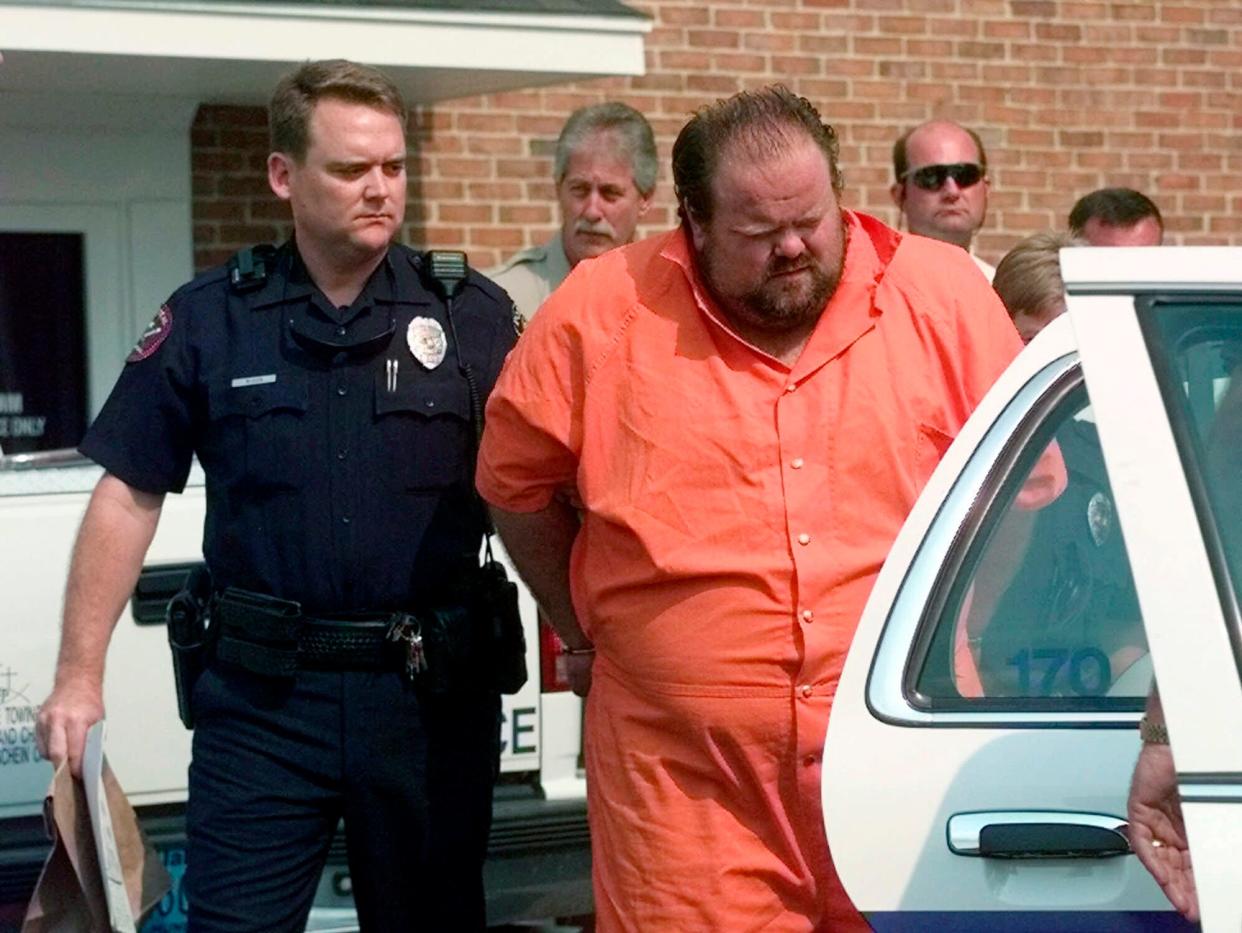Alabama won't lethally inject death row inmate - but may use fatal dose of nitrogen instead

- Oops!Something went wrong.Please try again later.
MONTGOMERY, Ala. — Alabama has officially agreed not to attempt a second lethal injection for death row inmate Alan Eugene Miller, who survived the state's first try to execute him.
In a Monday court filing, attorneys for Miller and the state agreed that future attempts to execute Miller can only be by nitrogen hypoxia, a still unused method for which Alabama does not yet have a protocol.
Gov. Kay Ivey recently asked the attorney general's office not to schedule executions until the state conducts a "top-to-bottom review" of its process after two consecutive failed attempts and an execution marred by a lengthy delay while setting an IV line. Kenneth Smith most recently survived the state's attempt to execute him on Nov. 17.
Miller first sued several state officials in August, claiming that their plan to execute him by lethal injection on Sept. 22 was unconstitutional because he had opted to die by nitrogen hypoxia. He accused the state of losing a form he submitted to elect the alternative execution method during a statutory 30-day window in June 2018. Witnesses at death row at Holman Correctional Facility described a mad dash as death row inmates were given just a few days to decide how they would die.
NITROGEN HYPOXIA: Alabama's plans for first-time nitrogen hypoxia execution nearing finalization, attorney says
FAILED EXECUTION: Attorneys for Alabama death row inmate claim 'botched' execution caused pain, torture
U.S. District Judge R. Austin Huffaker, Jr. sided with Miller and issued a preliminary injunction of his execution by lethal injection. After a series of appeals, the U.S. Supreme Court on his execution date lifted the injunction and cleared his death by lethal injection.
But time ran out. Officials called off the execution minutes before midnight as members of the execution team were unable to establish intravenous access before Miller's death warrant expired. Miller recounted the events of Sept. 22 in a new complaint filed in court days later, claiming that staff prodded and punctured his extremities with needles for more than 90 minutes as he was strapped to the death chamber gurney at Holman. Miller alleged they inserted a needle deep enough into his foot that they struck a nerve, causing his body to shake in the gurney's restraints.
Alabama moved quickly to get a second chance at executing Miller, and Marshall on Oct. 4 filed a motion with the state Supreme Court to set Miller's second execution date before others on death row with pending execution dates.
Miller would have been the first person in U.S. history to face a second execution by lethal injection. Only one person in America has been executed after a failed attempt: 18-year-old Willie Francis in 1947.
Alabama first indicated on Nov. 14 its plan not to lethally inject Miller, when Marshall asked the Alabama Supreme Court to withdraw his expedited execution date for Miller as the two parties talked about a potential settlement.
EXECUTIONS: Multiple states under scrutiny for recent lethal injection failures
Huffaker on Tuesday dismissed Miller's ongoing litigation pursuant to Alabama carrying out his death sentence only by nitrogen hypoxia.
Gov. Kay Ivey approved nitrogen hypoxia as an alternative method in 2018, but it has never been used to judicially execute a human. With no other states to draw information from, Alabama was left to develop a first-of-its-kind protocol for its use. It still hasn't finalized its protocol for a nitrogen hypoxia execution, but a state attorney previously hinted that the state was nearly ready.
During a nitrogen hypoxia execution, the condemned person would be made to breathe in pure nitrogen gas, killing them as their blood-oxygen level falls. The gas would likely be delivered by a gas mask. An employee of the state had previously asked Miller to be fitted for a gas mask, but Miller declined.
The method was touted as a "more humane" way of killing someone, but several critics and experts disagree. U.S. Supreme Court Justice Neil Gorsuch wrote in 2019 that the evidence presented to the court indicated nitrogen hypoxia could cause more pain than lethal injection, depending on how it is administered.
Miller was sentenced to death for the killing of three men in two workplace shootings in Shelby County in 1999. Prosecutors said an employee entering Ferguson Enterprises in Pelham saw Miller exit the building on Aug. 5, 1999, before finding Lee Holdbrooks and Scott Yancy dead inside. At another former employer's site, Miller killed Terry Jarvis.
This article originally appeared on Montgomery Advertiser: Alabama won't lethally inject Alan Miller, may use nitrogen hypoxia

